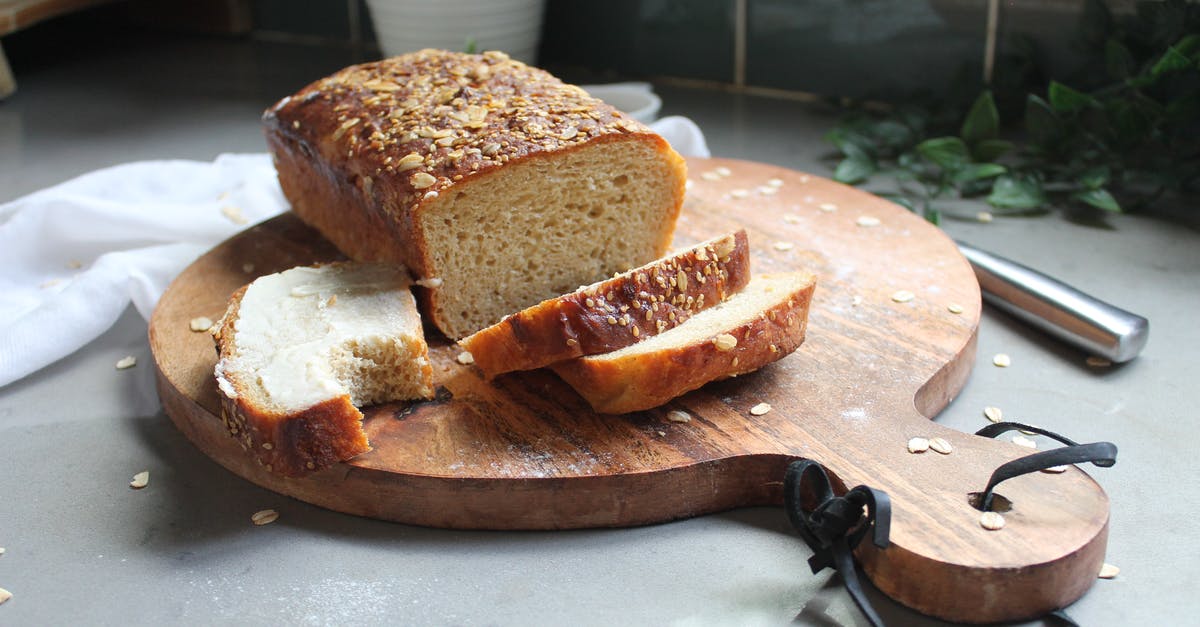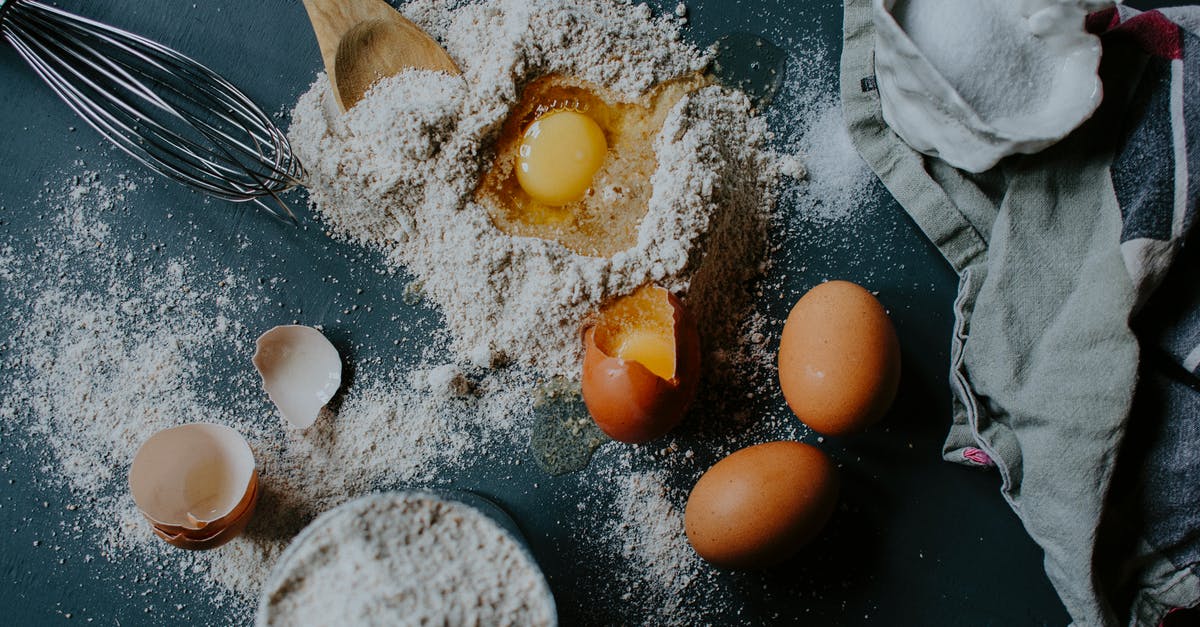What Makes Bread Gray?

I've been baking French-style bread loaves (not baguettes) for years. The ingredients are flour, salt, water, yeast, and about one tbsp cornstarch per cup of flour. For the last year or so, the inside of the loaves has sometimes been gray rather than white, but with little or no change in the taste. I have not changed ingredients nor preparation technique. Flour has been King Arthur bread flour for years. I am at a loss to explain the change.
I'm in Atlanta, about 1,000 feet above sea level. Earlier this summer, I made bread every day for two weeks at a beach house party, using equipment and ingredients brought from home. Every loaf turned out perfect, with no hint of gray. I have no idea why that might make a difference. (There's an electric oven at the beach, gas at home, but I made perfect, or at least white, bread with the gas oven for many years before this problem started.)
Also, if I cut into a loaf right after it comes from the oven, it's always white. The graying process seems to happen over a couple of hours. (I bake in the afternoon for an evening dinner.)
Edited October 5 to add: Additional data points: I've bought a three-loaf baguette pan with perforated bottom and I've been using it for about a month. No gray bread. I've introduced three new variables:
- Three loaves of about 260 g unbaked weight instead of two at 390-400 g unbaked.
- The pan is non-stick aluminum instead of black steel.
- The pan that produced the gray loaves was not perforated.
Ingredients and preparation, except for forming three loaves, are exactly the same. I'm not sure whether I've learned anything or simply confused matters even further.
Best Answer
What kind of salt are you using?
In the presence of iodine, starch can turn a surprisingly purplish-black color. This phenomenon has be leveraged for many decades in medical examiners' offices, to help determine the contents of a last meal in a cadaver (pardon the unappetizing digression).
Iodine is an essential nutrient, vital for the proper functioning of our thyroid (read more about Iodine Deficiency) that has relatively few ways of entering our bodies through our diet other than through shellfish, meats, eggs, and some dairy products.
One way to combat the problems of iodine deficiency is its addition to our salt, which we consume in predictable quantities and never goes bad. Table salt contains up to 25mg/kg of iodine and that number has been on the rise since its safety and helpfulness have been demonstrated repeatedly. Sea salt contains some iodine, as it is naturally occurring in the ocean, but in a much smaller quantity.
Maybe when you were at the beach, your salt supply changed to sea salt or an uniodized version and and when you returned and used the regular Iodized Morton's or Iodized sea salt.
Pictures about "What Makes Bread Gray?"



Quick Answer about "What Makes Bread Gray?"
Your Bread Dough Has Too Much Moisture That can cause your bread to turn gray, and it will become grayer as you continue to store it. If you do not allow the bread to cool before you wrap it, the wrapping will trap steam. This steam will create too much moisture, and your bread will become grayer every day.What gives bread its color?
Loaves of true pumpernickel undergo a long, slow bake (up to 24 hours); the dark color comes from a browning reaction that takes place in the dough during that time. (Less-traditional pumpernickel bread relies on molasses for its color and flavor).What improves crust colour of bread?
The type of sugar found in milk, lactose, has little sweetening power and does not ferment, so in dough made with skim milk powder, sugar has to be added or the fermentation will be very slow. While lactose is not fermentable, it caramelizes readily in the oven and produces a healthy crust colour.Paul Hollywood's What Went Wrong: Bread
More answers regarding what Makes Bread Gray?
Answer 2
Flour... Basically flour you purchase nowadays in stores is pretty low quality. Flour can sit on a shelf a long time before you get it because not a lot of people are baking nowadays. The older it is, the poorer it performs and in my experience the greyer it is. I typically throw out all my flour if I notice it is not producing a clean white light loaf. I have used many different brands over the years with all producing gray tinted loaves at times. I also notice a wide variety of crumb types and taste. Older flour is not tasty, nor does it make good bread. The best tasting bread I have tasted came from a farm where they ground their own grain. So... In a nutshell, flour you purchase in stores is very poor in quality due to many factors. Try to find a organic mill and purchase direct. Happy baking!
Sources: Stack Exchange - This article follows the attribution requirements of Stack Exchange and is licensed under CC BY-SA 3.0.
Images: Nourishment DECODED, Flora Westbrook, Andy Kuzma, Alex Green
